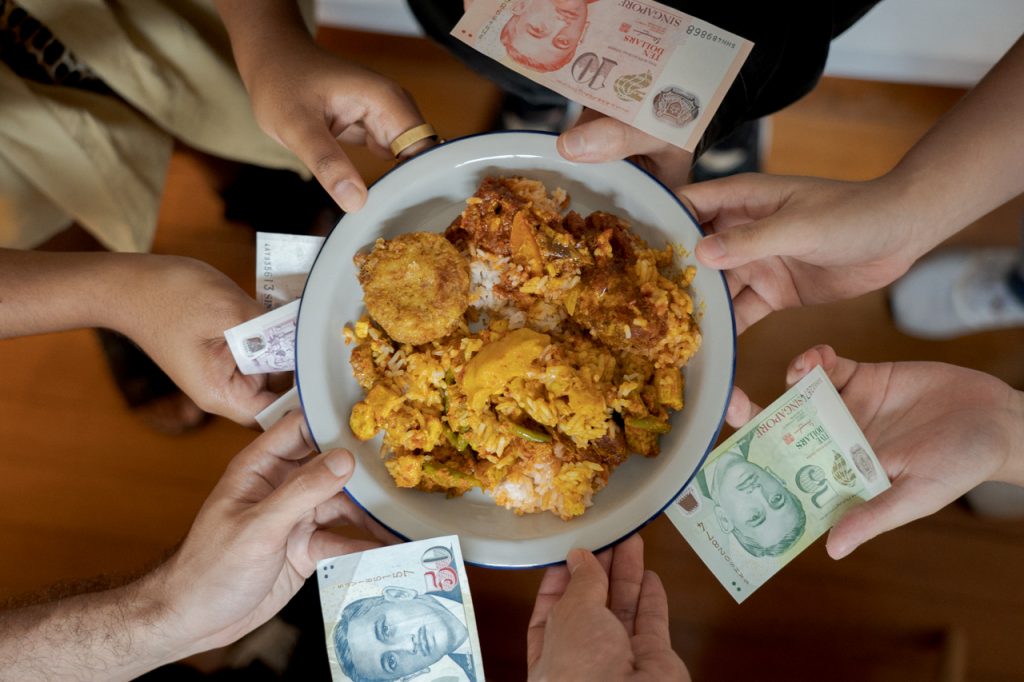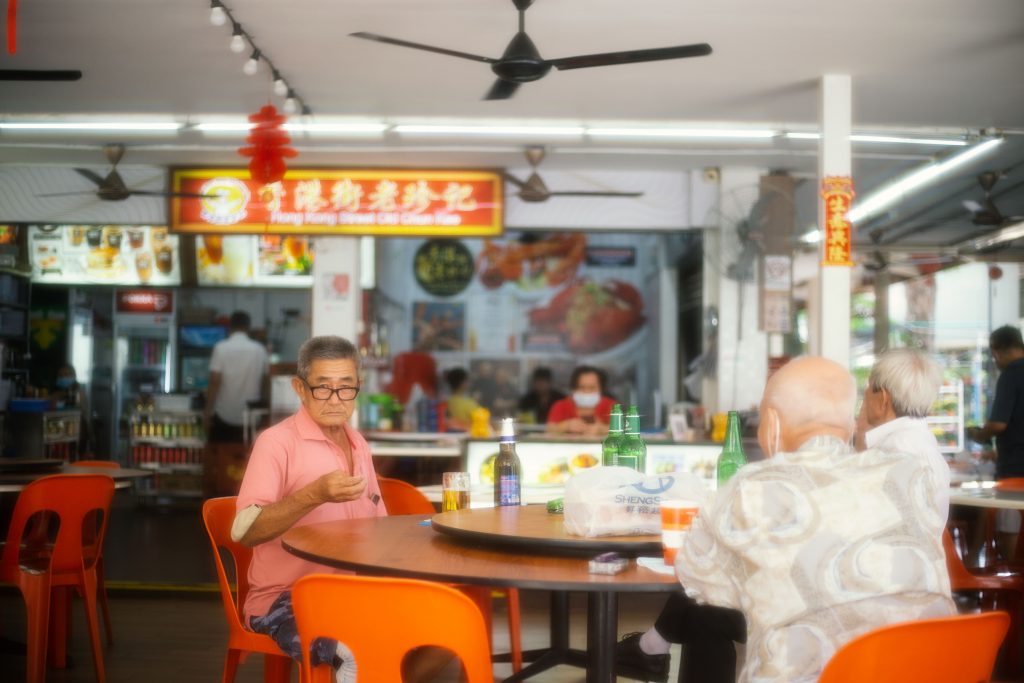Top image: Zachary Tang / RICE file photo
It’s a topic as old as time and as sensitive as steamed tofu: The mysterious art of putting prices on mixed rice meals.
I’m talking about cai fan, nasi padang or any other meal across any cuisine that involves pointing fingers at food platters while ordering.
As cornerstones of hawker centres and coffee shops, these stalls can usually be counted on for an affordable meal (if you know which premium dishes to avoid). But time and again, their dynamic pricing system befuddles the masses.
Rarely are the prices listed at these stalls. You simply pick your dishes and hope for the best that they fit your budget. Even for those that do have a semblance of a price list specifying the cost of different meat and vegetable combos, the final bill can vary.
Which is why the move to make budget meals mandatory at all coffee shops leased from the Housing and Development Board (HDB) makes for great news.
By 2026, each coffee shop leased under HDB will have to provide four budget meals (ranging from $3 to $3.50) and two budget drinks (black coffee and tea at around $1 to $1.15). Stallholders get a 5 percent discount on renewal rents for a year should they offer these budget meals.
That’s one way to keep food affordable these days. Here’s another: Full price transparency for each dish we point at so everyone can keep to their food budget.

Surge Pricing?
One man recently cried foul after the same cai fan order cost him $5 on one day, $9 on another, and $10.20 on a third.
Last November, a man—a citizen journalist, if you will—took to Stomp to complain about being charged $5.40 for his cai fan, which consisted of braised pork belly, bitter gourd and potatoes. According to him, the price was “expensive for a hawker centre that’s managed by the government”.
When a Stomp writer ordered the same dishes from the stall, they were charged $4.80.
While a valiant effort, all the experiment did was to prove what we already knew. There is no exact science to mixed rice pricing. And to be fair, they’re pretty decent prices.
Back in 2019, three RICE writers tried to get to the bottom of nasi padang pricing by visiting different stalls, ordering the same thing, and seeing if they were charged different prices.
What started as an attempt to debunk the ‘Malay’ and ‘non-Malay’ pricing myth ended up with an unsatisfying conclusion: Change is the only constant.
They found that on any given day, any number of factors, including but not limited to looking Malay, being a regular, buttering the makcik up, and paying with bigger notes, could influence the final price. To add to the enigma, they found that the factors they identified didn’t even apply all the time.
For example, on some days, paying with a bigger note led the makcik running the stall to round down the bill. On other days, she would round it up.
In other words, there’s no way to predict exactly how much your meal is going to be. The variations in your final bill can be nominal, sure. But every cent matters when we’ve just been warned of major economic uncertainties and a potentially longer period of inflation.

When Vegetables Become Meat
Jesus turned water into wine. Similar miracles take place on a daily basis at hawker centres—anything can be turned into a meat dish when it’s time to tabulate the bill.
Steamed egg with the tiniest sprinkling of minced meat over top? Sorry, it’s being charged as a meat dish. Mushrooms? Also meat, apparently. And beware of that long bean dish with those minced pork bits hiding in the sauce.
And stay with me on this, because we aren’t done yet. Apparently, vegetable dishes with fish cake are also considered meat.
In an interview with Mothership, Javier Ng, the boss of Gu Zao Wei, a cai fan stall in Choa Chu Kang explained: “Because fish cake is made from what? Fish what. Is fish a meat? Yeah.”
Huh?
Beyond the spontaneous discounts or price surges, which are more mood-based, these attempts to turn everything into a meat dish, and hence charge more, feel a little more deliberate.
I’m all for hawkers charging a fair price for their food, or even shrinking their portions as they see fit. And trust me, I’m the last person to demand cheap hawker food at the expense of their business operations.
But if I point to a dish that looks like it’s 90 percent broccoli and pay a meat price in the end, it’s fair to feel a little cheated.

Just Label It
There is some consolation that all HDB rental coffee shops will be required to provide affordable meal options. And let’s be honest, we’re not going to complain that much about fluctuating prices if our moods are already set on beef rendang or (god forbid) fish that day.
What I’m saying is that we’ll just be able to stomach the final bill better if we know upfront what we’re in for. Label the prices of each vegetable, seafood, and meat dish clearly—that’s how everyone can truly plan budget meals.
Many stalls switch out their dishes on a daily basis, sure, but clearly stating which category a dish falls into can be as simple as adding a coloured peg to the edge of the tray. And let’s not forget ‘premium’ items like mutton and fish roe. Knowing exactly what we’re ordering is the first step to combatting bill shock.
Do it in the style of CBD salad stalls, even. If you work in town, you’ve probably joined the snaking queue for one of these stalls before. Everything is always perfectly organised, with the meats or proteins on one side, and vegetables or toppings on the other.
Simplify pricing to different tiers based on the number of proteins and toppings, and building your rice order can be as simple as building a salad.
I know restructuring pricing might be extra work for our tireless hawkers. The really budget-minded among us might even go so far as to ask about the prices for each dish they point at, but all it does is annoy the hawker or the customers lining up behind.
But if transparent labelling means we’ll see fewer people whining about $7 nasi padang and $12 cai fan, we’re all winners at the end of the day.






